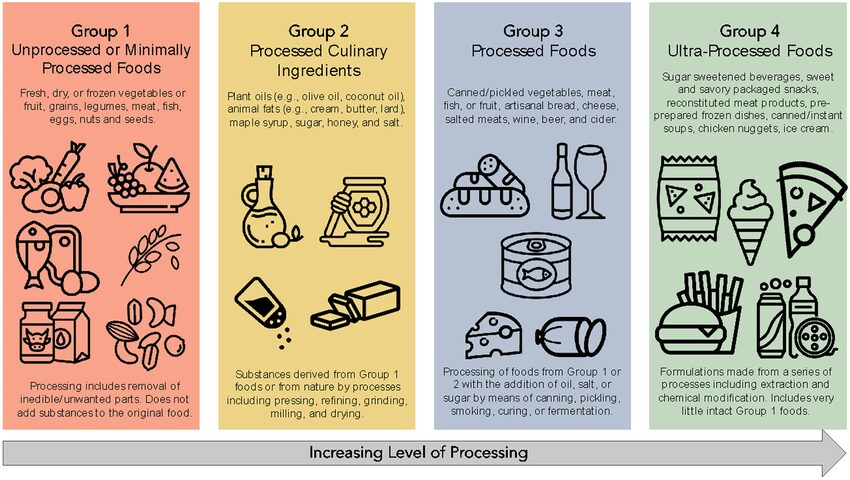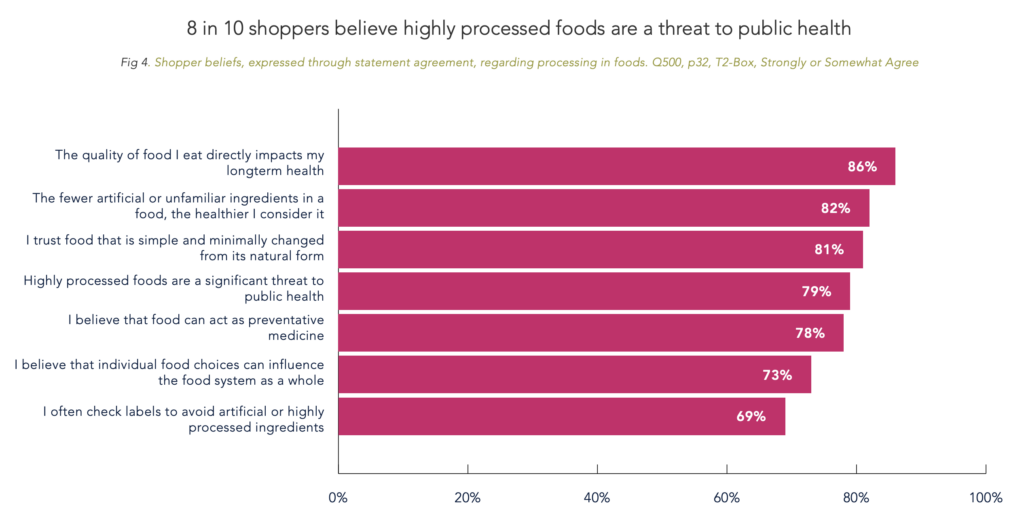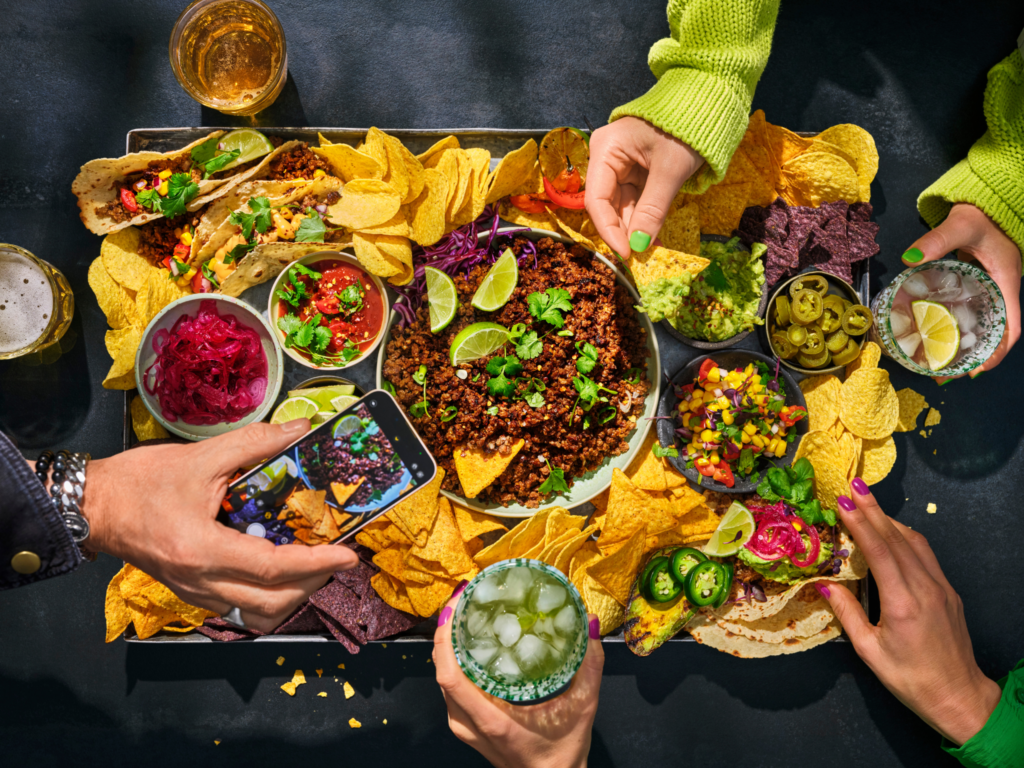
The Non-GMO Project has published the first version of its Non-UPF Verified Standard to help companies label foods that are not ultra-processed.
What makes a food non-ultra-processed?
It’s a question the folks at the Non-GMO Project have spent months answering, as part of a pilot scheme with 16 food manufacturers.
At the start of the year, the organisation unveiled the Non-UPF Verified programme, under the Food Integrity Collective group, which brands can use as an on-pack label to definitively highlight a product’s status as an unprocessed or minimally processed food.
Now, it has published the first version of the Non-UPF Verified Standard, which will enter its full implementation phase. Independent technical administrators will act as impartial evaluators separate from both the Non-GMO Project and applicant brands, and assess each product seeking the label against the core criteria developed over the previous months.
“This is about reconciling the false divide between ‘real food’ and packaged food,” said Megan Westgate, CEO and founder of the Non-GMO Project. “The Non-UPF Standard defines a middle ground where convenience and nourishment can genuinely coexist, giving brands a path to make better food and shoppers a reason to trust it.”
What are UPFs, and how does the new standard define them?

First, a quick primer. Ultra-processed foods (UPFs) were first defined by the Nova classification developed by researchers in Brazil in 2009, denoting products as those made with industrial formulations and techniques or containing cosmetic additives thought to be of little culinary use. Colloquially, they’re thought of as foods you can’t make in your home kitchen.
Americans now get 55% of their calories from UPFs, which many experts have linked to a multitude of health ailments (and even premature death). Others, however, argue that this claim is misleading because the category is too broad.
For instance, everything from that tub of ice cream in your freezer to the canned soup in your drawer is a UPF. So are the chicken nuggets you eat at McDonald’s, the Beyond Burger you buy at supermarkets, and the slice of whole-grain bread you have for breakfast.
The American Heart Association has stated that not all UPFs are equal, and several such products can actually be good for you, including plant-based meat and dairy alternatives, which have been bundled in the same category as Oreos, Lay’s and Pepsi.
That has led to a consistent drop-off in sales of these products over the last couple of years. After all, 72% of Americans are trying to avoid UPFs in their diets, and 79% feel they’re a “significant threat” to public health, according to research commissioned by Food Integrity Collective.

To its credit, the Non-GMO Project recognises the nuance. Its criteria for the Non-UPF Verified Standard nod to the “not all processing is equal” argument, distinguishing between minimal, conditional, and prohibited processing methods. In other words, products must primarily contain minimally processed ingredients and be free from “high-impact chemical, structural, thermal, and biological modification”.
Foods produced via methods deemed prohibited cannot bear the non-UPF label, but conditional methods may be used if they meet “explicitly defined conditions”. Permissible processes, meanwhile, can be used without restrictions, as long as they either preserve the food’s natural structure and integrity, or maintain its fundamental characteristics.
Further, the standard restricts ingredients either “widely recognised as harmful or characteristic of ultra-processed formulations”, especially those used to create hyperpalatable textures and flavours. This includes a prohibition on non-nutritive sweeteners (like aspartame, monkfruit extract, xylitol, or erythritol) and limits on refined added sugar.
How will plant-based alternatives be impacted?

So what does this mean for plant-based food manufacturers? It’s worth noting that among the 16 brands involved in the trial, several have meat-free or vegan portfolios, such as Califia Farms, Amy’s Kitchen, Simple Mills, and Caulipower.
The Non-GMO Project has published an extensive list of processed ingredients that may be prohibited or used conditionally, many of which appear in plant-based meat and dairy products. The standard states that even some gums, thickeners and texturisers produced through conditional processing methods, including industrial fermentation and enzymatic hydrolysis processes, are prohibited ingredients.
Among these is methycellulose, a gelling and binding agent made by heating cellulose and treating it with methyl chloride. It is part of many plant-based meat products, including those from giants like Beyond Meat, Impossible Foods, Morningstar Farms, and Lightlife Foods.
Similarly, xanthan and gellan gum are part of this prohibited list. Gellan gum is widely used in non-dairy milk products, including by brands like Califia Farms (which was part of the pilot), Silk, and Ripple Foods. Xanthan gum is widely used in the food manufacturing and restaurant sectors – it’s present in everything from a Beyond Sausage to a Ben & Jerry’s non-dairy ice cream.

That said, some gums and thickeners are still fair game, if they’re only used when functionally necessary, specifically to “suspend or stabilise added vitamins, minerals, or other essential nutrients in liquid products” where no alternative is viable. This group includes guar gum, locust bean gum, pectin and agar-agar.
Plant-based dairy products with more than 7% of added sugar by weight will also not be eligible for Non-UPF Verified status, nor will vegan protein powders with over 5% of free sugars.
Most packaged foods use ‘natural flavours’ as an umbrella term for a whole host of things, and the opaqueness of the system led the Non-GMO Project to keep compliance with its rules on this section optional.
There’s a section on the use of fats too. Hydrogenated and interestified oils, which may appear in some plant-based butters, margarine, or ghee alternatives, are prohibited. Refined and deodorised fats such as coconut oil (widely used in vegan cheese from brands like Violife and Daiya) are allowed on the condition that they don’t make up more than 30% of a product’s formulation.

Other prohibited ingredients that may appear in plant-based meat and products include sugar esters of mono- and diglycerides of fatty acids (common in non-dairy creams), monosodium glutamate (MSG), and soy leghemoglobin (the signature ingredient in the Impossible Burger).
So a ton of vegan products will not pass the Non-UPF Verified Standard, and that could mean further financial misery for the industry. If this label witnesses the same success as the Non-GMO Butterfly mark, it might be wise for companies to consider reformulating their products.
“Processing itself isn’t the enemy, it’s how and why it’s done that matters,” said Westgate.
The post What Does the Non-UPF Verified Standard Mean for Plant-Based Meat & Dairy? appeared first on Green Queen.
This post was originally published on Green Queen.